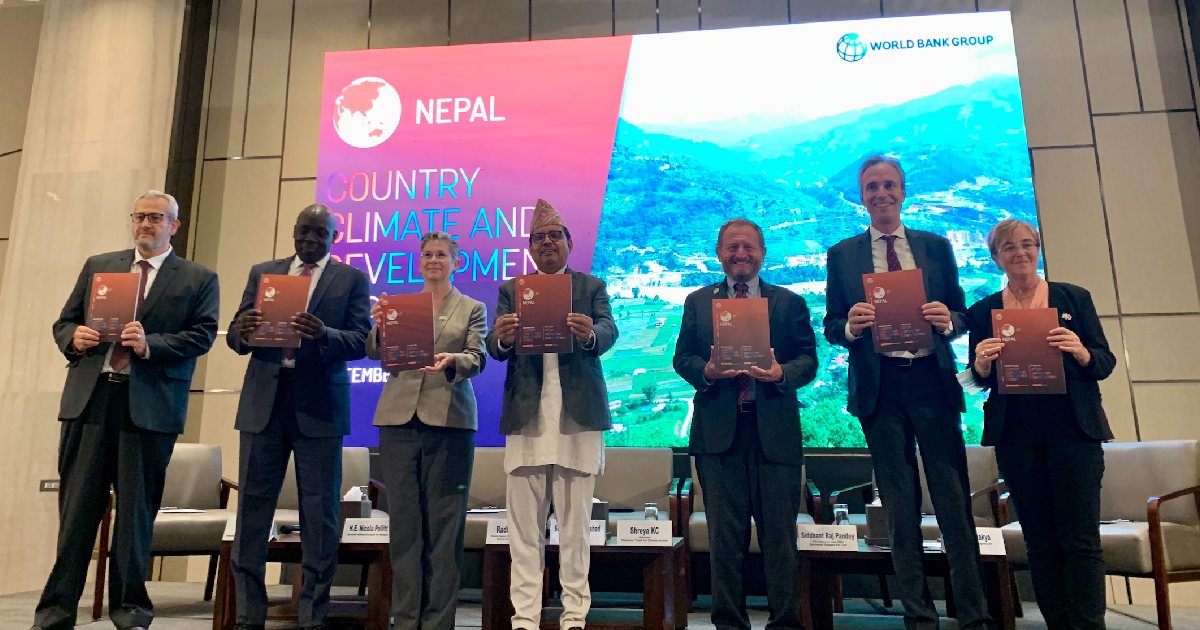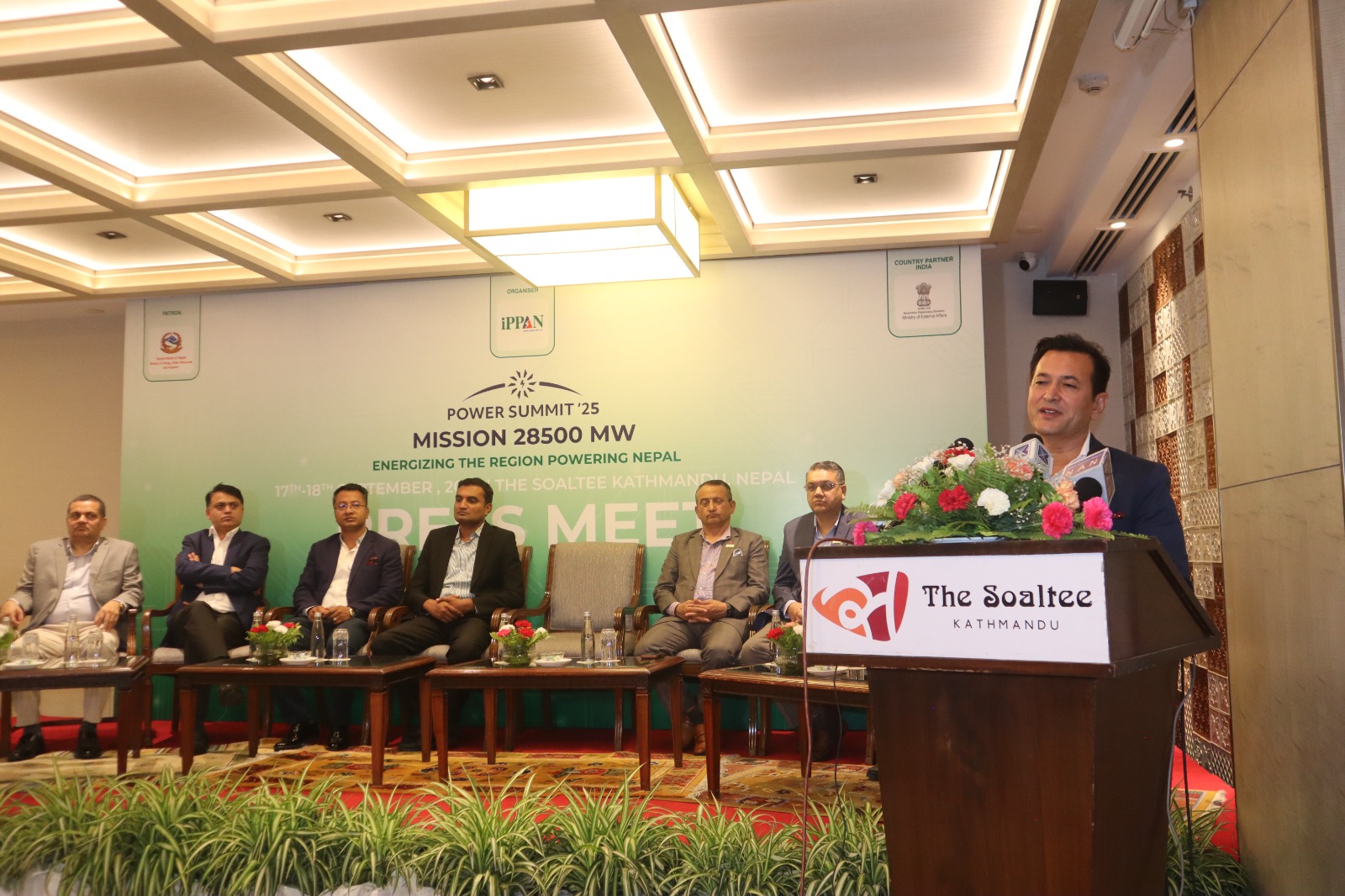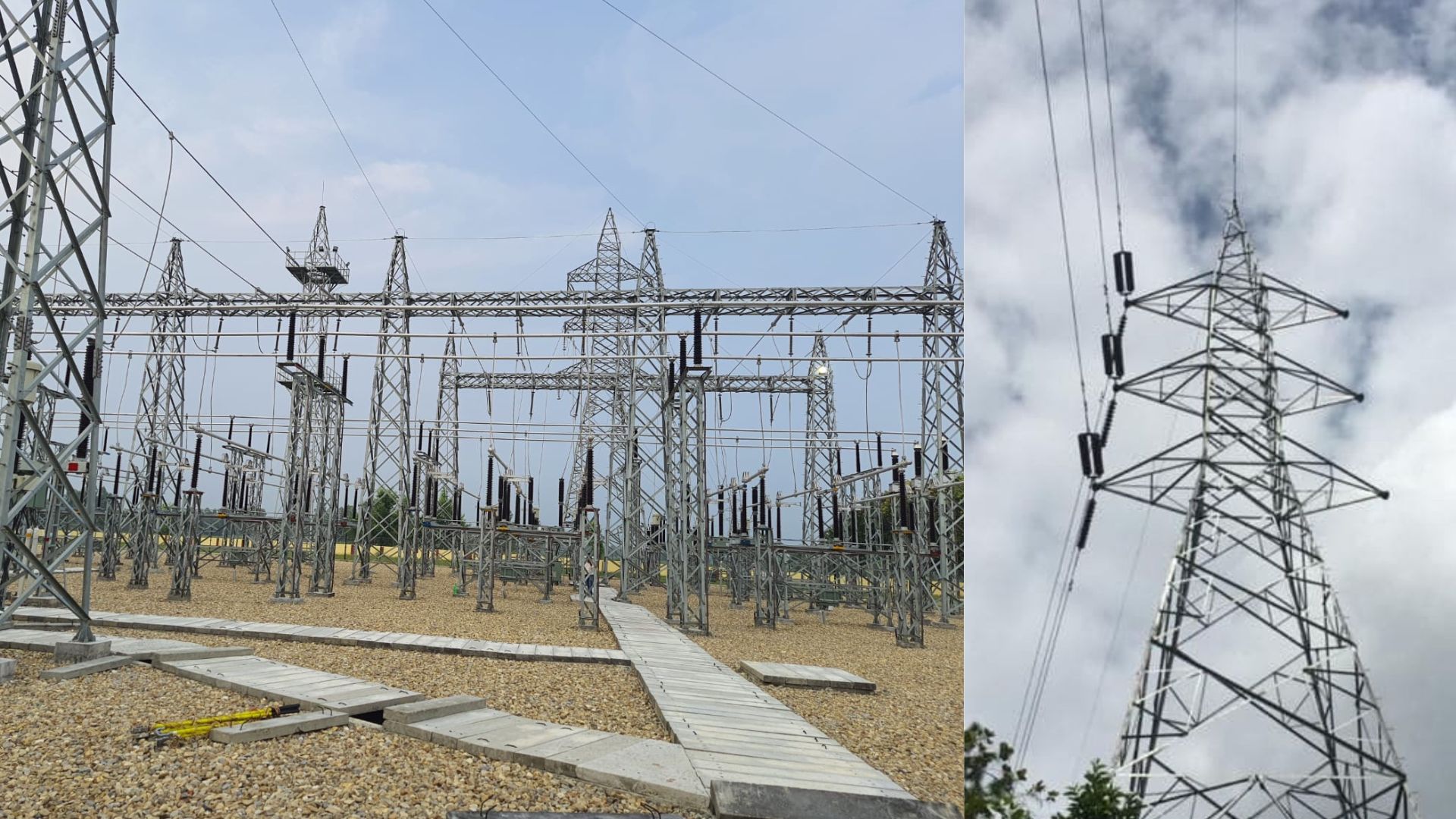
KATHMANDU: The World Bank Group’s ‘Country Climate and Development Report for Nepal’ has warned that Nepal’s GDP could be at least 7 percent smaller by 2050 if climate impacts are left unchecked.
The report also underscored the urgency of building resilience to climate change and recommends policies and investments for integrated climate and development solutions for green, resilient, and inclusive development.
“With increasing evidence of more severe climate change impacts, Nepal stands at a critical juncture to embark on a path for recovery and growth that is more sustainable, more inclusive, and more resilient to future shocks,” said World Bank Vice President for South Asia Martin Raiser. “The good news is that the country’s notable successes in community forestry and hydropower investments are a strong foundation for future climate-smart growth.”
Nepal’s supply chains, farmers, and urban dwellers are already facing devastating climate impacts such as landslides, droughts, and flooding. Without concerted steps to shore up resilience, future climate hazards will threaten the country’s long-term development, states the report.
The report further noted that climate variability is already a major driver of food insecurity and poverty in Nepal, with increased flooding and heat stress seen in the southern regions, while the north experiences increased landslides, water stress, and glacial lake overflow.
As Nepal’s economy grows, it also needs to address its greenhouse gas and air pollution emissions. While the country is a negligible contributor to climate change – producing 0.1 percent of total global greenhouse gas emissions – the country’s emission rate is growing rapidly. Nepal also has one of the highest levels of air pollution in the world, with emissions from transport, biomass burning, and industrial activities significantly impacting health and productivity.
Nepal has pledged to achieve net zero emissions by 2045 and to significantly scale up hydropower investment in the coming decade. In 2021, Nepal adopted the Green, Resilient and Inclusive Development (GRID) approach as a national vision to guide long-term green growth and build resilience to climate and other shocks that are barriers to Nepal’s development ambitions. Under Nepal’s federal structure, the local governments are placed at the center of climate resilience and development efforts with extensive implementation responsibilities and play a crucial role in translating the GRID strategy into action.
To help Nepal achieve its development goals while implementing its climate commitments, the report proposes actions on two fronts: building resilience to climate impacts and pursuing public and private investments in low-carbon solutions, notably hydropower and its export. The report also highlights that women, indigenous people, and other marginalized groups are often excluded from mainstream development and suffer from cumulative and cascading impacts of climate change and disasters.
To shore up resilience, the report recommends enhancing water resource management, including water storage investments; embracing climate-smart agriculture; and transitioning to sustainable forest management. Similarly, the report also stresses the need for more work is needed to assess climate impacts on future river flow, invest in supporting infrastructure to firm up exports, engage the private sector more systematically, and continue to work with regional partners. The report recommends strategic urban planning to invest in municipal solid waste and water treatment infrastructure, green, resilient buildings, and low-carbon transport options such as e-mobility and mass transit.
To support these transitions, the report also recommends that Nepal needs to prioritize three key enablers: scale up all types of finance for resilience and low-carbon development; strengthen household and community resilience through social protection and well-managed built and natural capital, and strengthen governance for climate change and disaster risk management through deeper federalization of responsibilities.
“Nepal’s transition to a prosperous low-carbon economy that is resilient to climate adversity will also require significant mobilization of private expertise and capital,” said Ruth Horowitz, IFC’s Regional Vice President for Asia and the Pacific. “The private sector already plays a crucial role in harnessing clean energy—and with targeted reforms, more private finance, including foreign direct investments, can be crowded in to sustainably green the entire economy while reducing fiscal pressure on public finance.”









